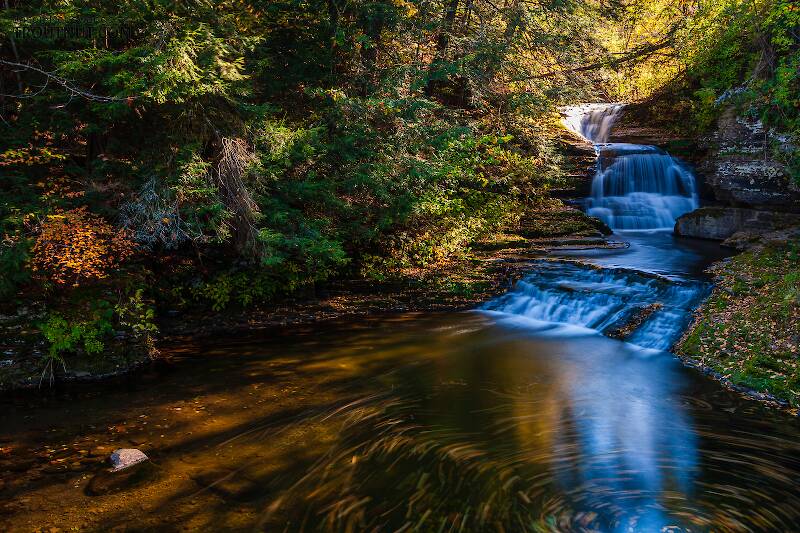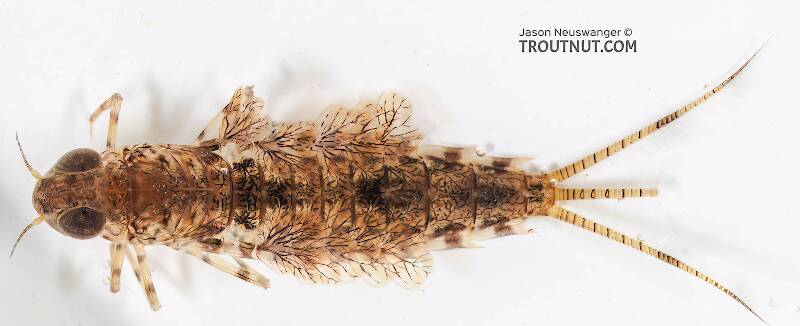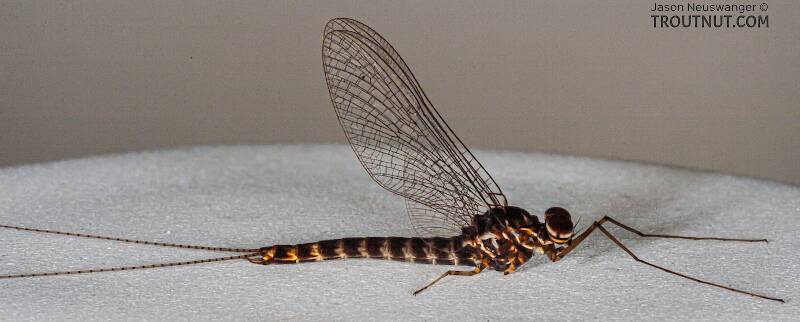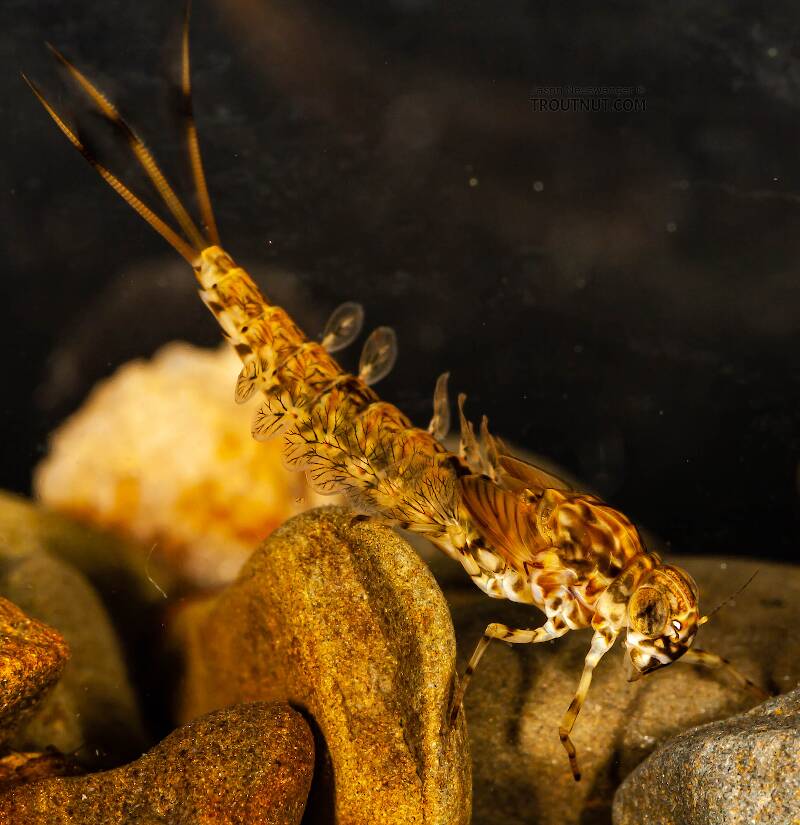
Salmonflies
Pteronarcys californica
The giant Salmonflies of the Western mountains are legendary for their proclivity to elicit consistent dry-fly action and ferocious strikes.
Featured on the forum

It's only barely visible in one of my pictures, but I confirmed under the microscope that this one has a prosternal horn and the antennae are mid-way between the eyes and front of the head capsule.
I'm calling this one Pycnopsyche, but it's a bit perplexing. It seems to key definitively to at least Couplet 8 of the Key to Genera of Limnephilidae Larvae. That narrows it down to three genera, and the case seems wrong for the other two. The case looks right for Pycnopsyche, and it fits one of the key characteristics: "Abdominal sternum II without chloride epithelium and abdominal segment IX with only single seta on each side of dorsal sclerite." However, the characteristic "metanotal sa1 sclerites not fused, although often contiguous" does not seem to fit well. Those sclerites sure look fused to me, although I can make out a thin groove in the touching halves in the anterior half under the microscope. Perhaps this is a regional variation.
The only species of Pycnopsyche documented in Washington state is Pycnopsyche guttifera, and the colors and markings around the head of this specimen seem to match very well a specimen of that species from Massachusetts on Bugguide. So I am placing it in that species for now.
Whatever species this is, I photographed another specimen of seemingly the same species from the same spot a couple months later.
I'm calling this one Pycnopsyche, but it's a bit perplexing. It seems to key definitively to at least Couplet 8 of the Key to Genera of Limnephilidae Larvae. That narrows it down to three genera, and the case seems wrong for the other two. The case looks right for Pycnopsyche, and it fits one of the key characteristics: "Abdominal sternum II without chloride epithelium and abdominal segment IX with only single seta on each side of dorsal sclerite." However, the characteristic "metanotal sa1 sclerites not fused, although often contiguous" does not seem to fit well. Those sclerites sure look fused to me, although I can make out a thin groove in the touching halves in the anterior half under the microscope. Perhaps this is a regional variation.
The only species of Pycnopsyche documented in Washington state is Pycnopsyche guttifera, and the colors and markings around the head of this specimen seem to match very well a specimen of that species from Massachusetts on Bugguide. So I am placing it in that species for now.
Whatever species this is, I photographed another specimen of seemingly the same species from the same spot a couple months later.

Troutnut is a project started in 2003 by salmonid ecologist Jason "Troutnut" Neuswanger to help anglers and
fly tyers unabashedly embrace the entomological side of the sport. Learn more about Troutnut or
support the project for an enhanced experience here.
Brown Quill Spinners
Like most common names,"Brown Quill Spinner" can refer to more than one taxon. They're previewed below, along with 5 specimens. For more detail click through to the scientific names.
Mayfly Species Siphlonurus alternatus
These are sometimes called Brown Quill Spinners.
This species occasionally produces important spinner falls. Its spinners may join the swarms of Siphlonurus quebecensis or Siphlonurus rapidus, amplifying the importance of all three species.
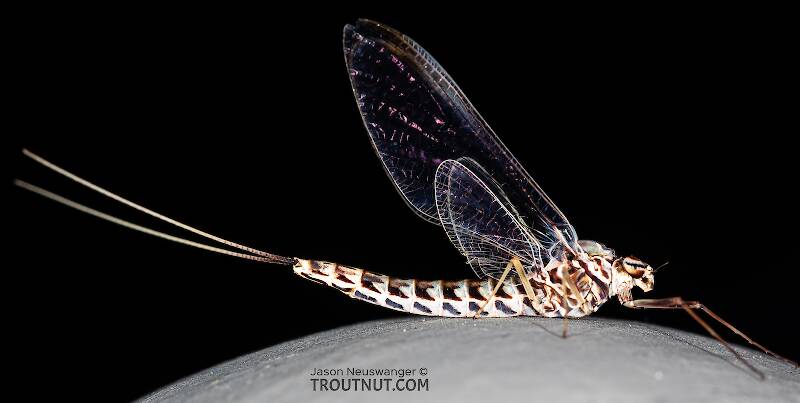
I'm tentatively classifying this one as Siphlonurus alternatus, because it seems to fit that species best in the old keys in Needham's Biology of Mayflies, but I'm hesitant because I can't find documentation that southwest Montana or the surrounding area is within the species' range, although they are widely distributed throughout eastern North American and western Canada.
Mayfly Species Siphlonurus quebecensis
These are sometimes called Brown Quill Spinners.
This is the Siphlonurus species I have encountered most frequently on Eastern trout waters. I often find its spinners swarming in a mix with Siphlonurus alternatus, and I have read that Siphlonurus rapidus may join these groups as well.
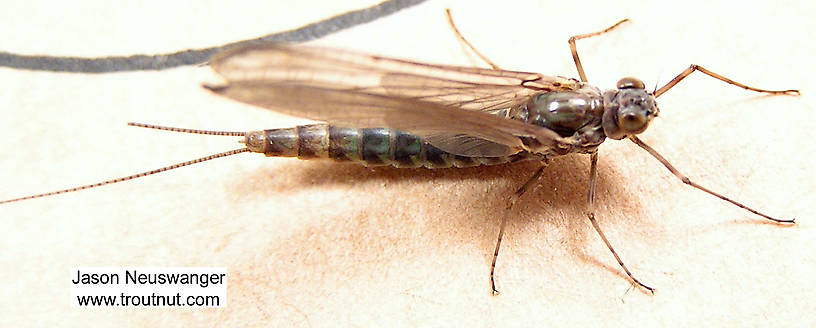
This one hatched in my house after I brought some nymphs home to photograph.
See 4 more specimens...

